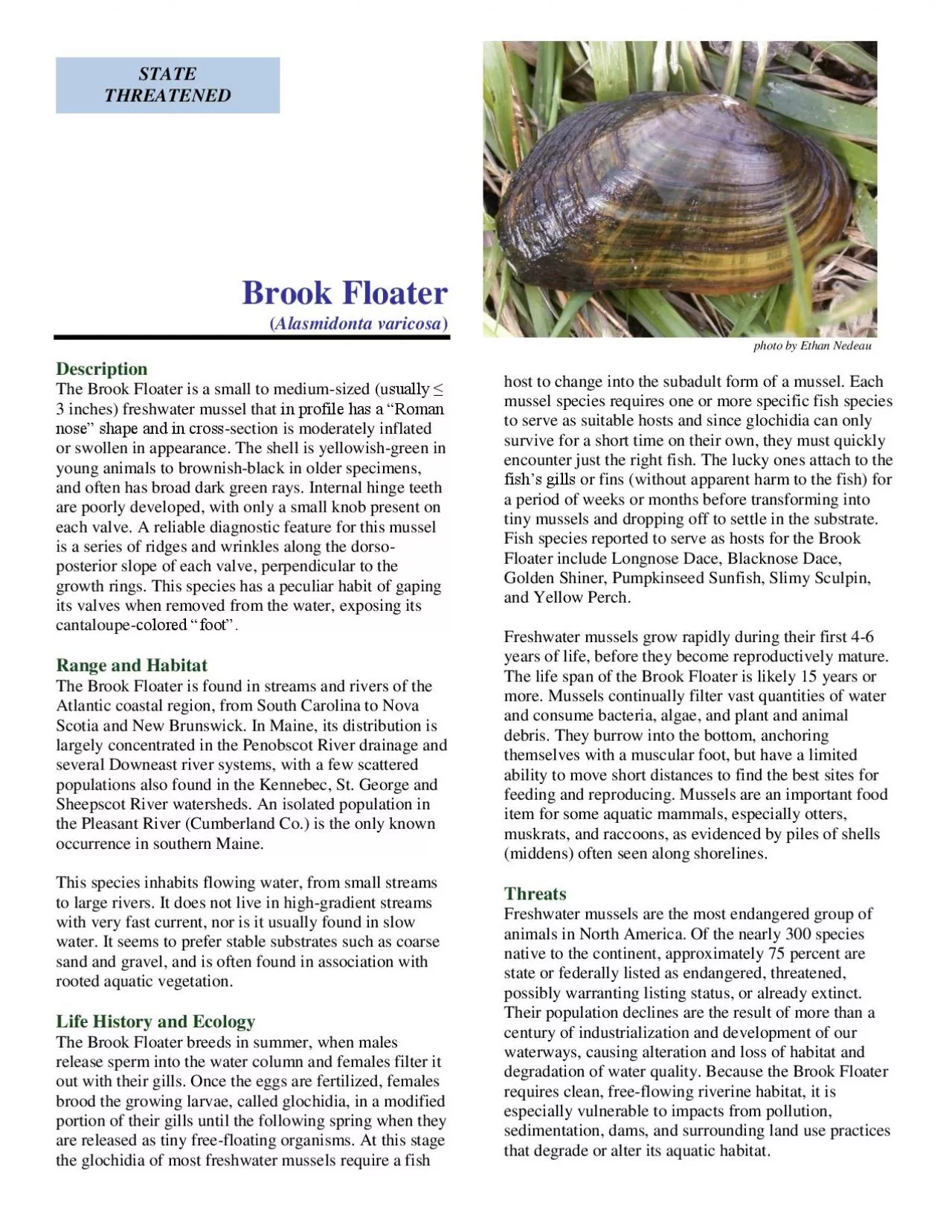PDF-Alasmidonta varicosa
Author : eleanor | Published Date : 2022-09-22
Brook Floater Description The Brook Floater is a small to medium sized u sually 3 inch es freshwater mussel that in profile has a Roman nose shape and in cross section
Presentation Embed Code
Download Presentation
Download Presentation The PPT/PDF document "Alasmidonta varicosa" is the property of its rightful owner. Permission is granted to download and print the materials on this website for personal, non-commercial use only, and to display it on your personal computer provided you do not modify the materials and that you retain all copyright notices contained in the materials. By downloading content from our website, you accept the terms of this agreement.
Alasmidonta varicosa: Transcript
Download Rules Of Document
"Alasmidonta varicosa"The content belongs to its owner. You may download and print it for personal use, without modification, and keep all copyright notices. By downloading, you agree to these terms.
Related Documents

